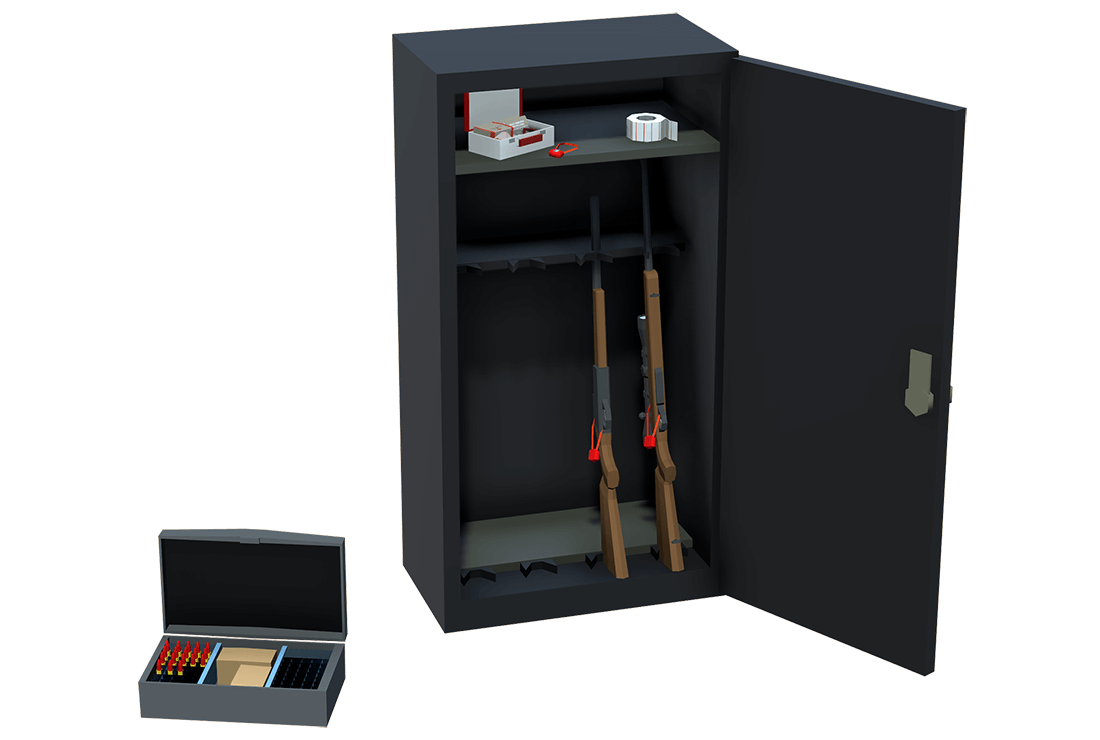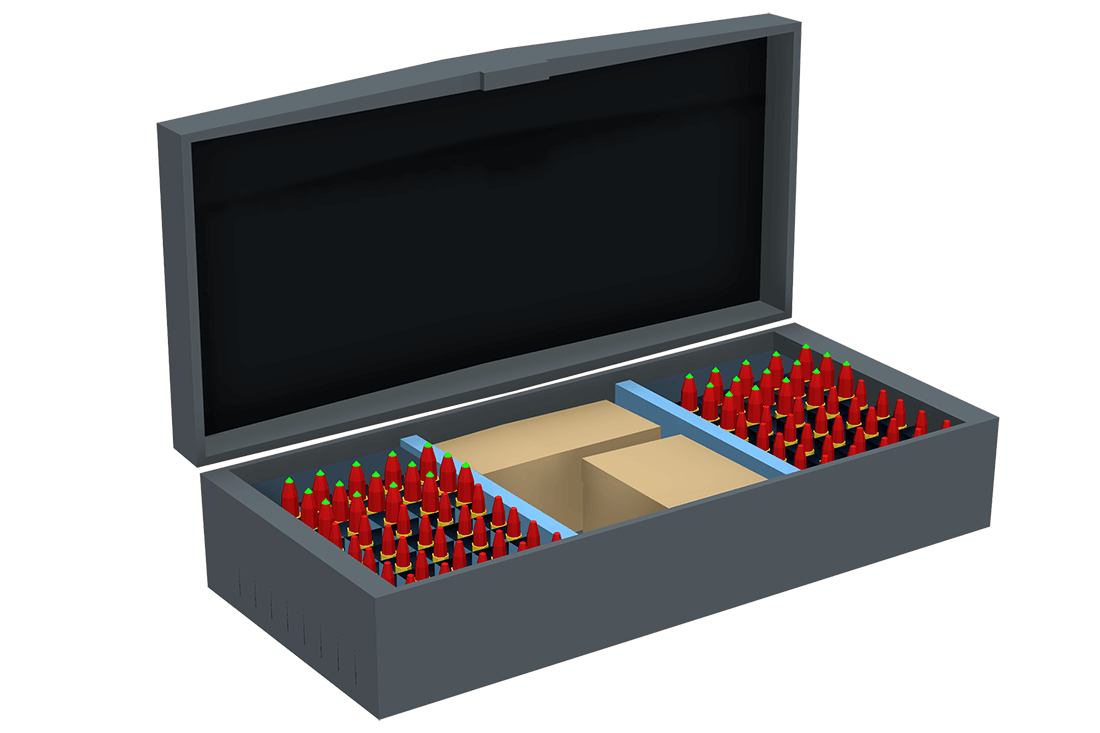Storage of Firearms and Ammunition

How are you supposed to store firearms?
Firearms inside the home or hunting camp should always be stored in a locked location to reduce the risk of injury. Firearms should never be within the reach of children.
Control of firearms when not in storage
-
-
Firearms should be unloaded except when actively hunting. This includes in a home, yard or vehicle. In a truck, your firearm should be stored unloaded behind the driver's seat bench. If transporting in a car, always keep the firearm unloaded locked in the trunk
-
A hunter must maintain physical control of his firearms whenever they are not in storage to prevent unauthorized use. This could mean being physically present, using gun locking mechanisms or locking the firearms in a vehicle.
-
Family members should be taught what to do if they find a firearm which has not been properly stored.
-
Ammunition Handling and Storage

Guidelines to follow regarding the handling and storage of ammunition:
- Be sure to store your ammunition and firearms in separate locked compartments.
- Check to be certain, that when storing your ammunition you do not mix different sizes together, they should be stored in an organized manner to avoid using the wrong ammunition for your firearm.
- Be certain to keep all ammunition out of the reach of children and irresponsible adults.
- Make sure to keep all ammunition away from flammables or excessive heat
- Ensure that there is no possibility of impact with a sharp object.
- Be sure to store all ammunition in a cool, dry place to avoid corrosion. Corroded ammunition can cause jamming, misfires, and other safety problems.
- Verify that the condition of the ammunition is in good state. If there seems to be any irregularity, do not use it.
Remember
-
With rifles and handguns, always double check the cartridges you intend to use to ensure they are the exact match for the barrel stamp on the firearm.
-
With shotguns, always double check the gauge, shotshell length, and whether or not it is a magnum load to ensure they match the barrel stamp on the shotgun.
-
When hunting, only carry ammunition for the firearm you are using. Serious accidents may occur because hunters carry improper ammunition.
-
A common mistake involves putting a 20-gauge shotgun shell into a 12-gauge shotgun. The smaller gauge shell will slide through the 12-gauge chamber and part of the way down the barrel. The shooter, especially when excited by the presence of game, may insert a 12-gauge shotgun shell behind the 20-gauge.
-
Accidents may also occur from 3-inch shotgun shells being fired in 2 3/4-inch chambers.
-
In the case of a hangfire, always maintain muzzle control.